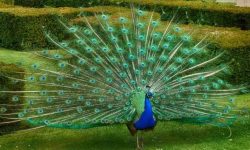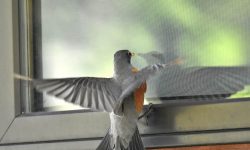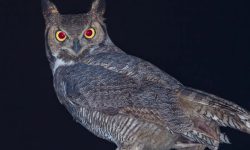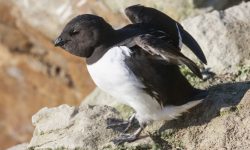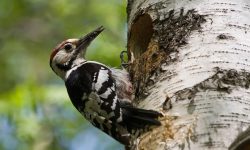The dodo bird is one of the most famous extinct animals in history. For centuries, it has been used as a symbol of disappearance, fragility, and human impact on nature. Yet despite its iconic status, many people know surprisingly little about the true reasons behind its extinction. Popular stories often oversimplify the downfall of the dodo, portraying it as a clumsy creature with no natural instincts. But the real story is far more complex and deeply connected to human expansion.
Understanding why the dodo bird went extinct requires looking beyond myths and exploring the ecological changes that swept through its island home. The extinction did not happen in a single moment. Instead, it unfolded through a combination of habitat destruction, hunting pressure, invasive species, and disruptions that the dodo had never faced before humans arrived. Each factor played a role in reshaping the fragile ecosystem of Mauritius, the only place where dodos lived.
This article explores the true history behind the dodo’s disappearance. It explains what the bird was really like, how it lived, what forces overwhelmed it, and what we can learn from its story today. By looking closely at the details, we gain a clearer view of how quickly a species can vanish when its world changes too fast to allow adaptation.
The Dodo Bird: Understanding the Species Before Extinction
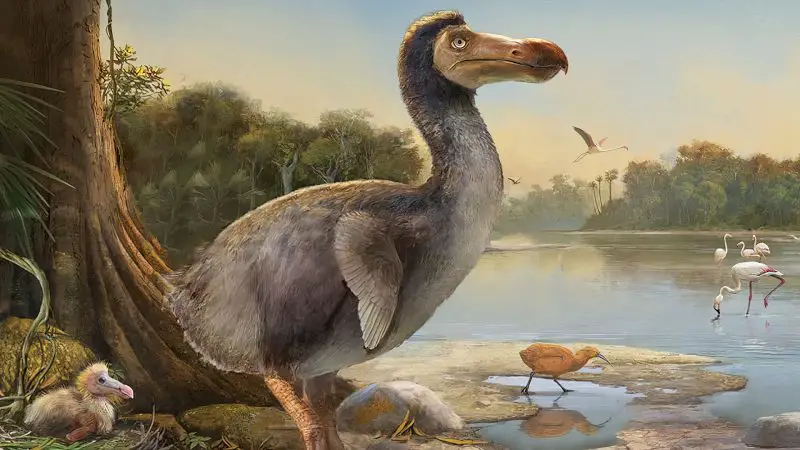
Appearance and physical characteristics
The dodo bird, known scientifically as Raphus cucullatus, was a large, flightless bird that lived exclusively on the island of Mauritius in the Indian Ocean. It stood roughly one meter tall and weighed anywhere between ten and twenty kilograms depending on seasonal food availability. Its appearance has often been exaggerated in illustrations, but modern reconstructions suggest the dodo had a more athletic build than early drawings indicated.
The bird’s large beak was one of its most distinct features. It was powerful and hooked, allowing the dodo to crack hard fruits and seeds found in the island’s dense forests. Its plumage was greyish with hints of brown, and its wings were small and nonfunctional. Although the dodo could not fly, it was well adapted to its ground-based lifestyle, moving efficiently across forest floors.
The bird’s legs were strong and capable of supporting its body weight during long foraging sessions. Its tail feathers formed a small tuft at the back, adding to its distinctive look. These characteristics were shaped entirely by its environment, which for thousands of years contained no mammalian predators that could threaten the dodo’s survival.
Habitat and ecological role
Mauritius was home to a rich tropical ecosystem with lush forests, abundant fruit trees, and deep volcanic soils. The dodo bird filled a significant ecological niche within these forests. It helped disperse seeds, broke down fallen fruit, and contributed to nutrient cycling. Its feeding habits influenced the growth and regeneration of native plants.
Because Mauritius lacked large predators, the island offered a safe haven where the dodo could evolve without the need for flight or rapid escape strategies. Its slow pace and trusting nature were completely natural adaptations to an isolated environment untouched by human presence.
Dodos preferred inland forests, where they had access to fruits, seeds, bulbs, and roots. Seasonal variations in food availability may have caused fluctuations in body weight. During wet seasons, when fruit was abundant, dodos grew heavier. In dry seasons, they likely slimmed down as resources became scarce. This cycle continues to influence how scientists interpret fossils and historical accounts.
Behavior and reproduction
The dodo bird’s behavior was shaped by calm, undisturbed surroundings. It nested on the ground, laying one egg at a time. This reproductive strategy worked well on an island with no predators capable of harming adults or chicks. The long incubation periods and slow chick development were normal for birds living in stable environments.
Dodos were likely social birds, moving in small groups to forage. Their behavior included exploring the forest floor, cracking fruits, and consuming leaves or seeds. The absence of threats allowed them to devote energy to feeding and reproduction rather than constant vigilance. Their survival strategy worked for thousands of years until a dramatic shift occurred: humans arrived.
The Arrival of Humans on Mauritius
Early Dutch exploration and settlement
The extinction of the dodo began when humans first set foot on Mauritius in the late sixteenth century. Dutch sailors arrived around 1598, and although Mauritius had been visited earlier by Arab and Portuguese ships, it was the Dutch who initiated permanent settlement. Their arrival brought rapid changes to the island’s landscape and ecology.
The Dutch did not intentionally drive the dodo to extinction. At first, they saw the bird merely as a source of fresh meat during long voyages. The dodo’s lack of fear made it easy to approach and capture. Sailors could walk directly up to the birds without resistance. This behavior, harmless in an untouched ecosystem, proved disastrous once humans arrived.
Beyond hunting, the Dutch transformed large sections of forest for timber and settlement. Trees were cleared for ship repairs, firewood, and construction. The dodo’s habitat shrank steadily as human activities expanded. The birds found themselves caught in an environment that was no longer predictable or safe.
Invasive species introduced to the island
Perhaps the most significant threat did not come directly from humans but from the animals they brought with them. Ships carried pigs, rats, cats, dogs, goats, and monkeys, many of which quickly adapted to the island environment. These invasive species disrupted food chains and introduced predation pressure the dodo had never experienced before.
Rats and pigs ate dodo eggs, which were laid on the ground without protection. Cats hunted young birds. Monkeys competed for fruits and other food sources. The arrival of these animals turned a safe haven into a landscape filled with new dangers. The dodo’s slow reproduction rate made it impossible to compensate for the increased loss of eggs and chicks.
As invasive species spread throughout Mauritius, the dodo lost both territory and food. Without previous evolutionary pressure from predators, the bird had no instinctive fear of new threats. Its trustfulness, once an advantage, became a major vulnerability.
Rapid changes to the ecosystem
The island’s ecosystem shifted rapidly in response to human activity. Forests were cut down, native plants were replaced by introduced crops, and grazing animals altered vegetation structure. These changes disrupted the delicate balance that had supported the dodo for thousands of years.
Habitat loss occurred faster than the birds could adapt. The reduction of nesting areas exposed eggs to animals that quickly consumed them. Seasonal food patterns were disrupted, leaving fewer resources for adult birds. These pressures, combined with direct hunting, made survival increasingly difficult for the species.
The combination of habitat destruction, invasive species, and human presence was the beginning of the end for the dodo bird.
How Hunting Contributed to Dodo Extinction
Food for sailors and settlers
Early settlers and sailors used the dodo as a convenient food source. The bird was easy to catch and provided meat for long voyages. Although accounts vary about the taste of dodo meat, many described it as tough and not particularly appealing. Still, hunger and limited supplies made the bird an obvious target.
Hunting alone may not have driven the species to extinction, but it reduced adult populations at a time when egg predation was already increasing. This combination of threats weakened population recovery. With fewer adults breeding, each lost nest had a greater impact.
Because dodos laid one egg per clutch, their reproductive rate could not support sustained loss of adults. Even moderate hunting pressure created long-term population decline.
The bird’s trusting nature
The dodo’s natural behavior made it vulnerable to hunting. Because it had evolved in an environment without predators, it had no instinct to flee from humans. Sailors often described the birds as curious and unafraid. They approached humans rather than retreating.
This behavior made them easy targets. Groups of dodos could be captured within minutes. Their defenselessness, which had been an effective trait for thousands of years, suddenly became a fatal disadvantage.
Cultural misunderstanding and exaggerations
Throughout history, the dodo has been portrayed as clumsy or foolish. These depictions were likely influenced by sailors’ stories and poor illustrations created by artists who had never seen live birds. In reality, the dodo was well adapted to its environment.
However, these misconceptions influenced how people treated the species. A lack of appreciation for the bird’s role in the ecosystem contributed to careless actions that accelerated its decline.
By the time settlers realized how quickly the species was disappearing, it was already too late. The population had dropped below the threshold needed for recovery.
Ecological Collapse and Final Decline
Egg predation and reproductive failure
Ground-nesting birds are extremely vulnerable to egg predators. The introduction of rats and pigs was devastating for dodos because these animals reproduced rapidly and spread across the island. They raided nests, consumed eggs, and left few opportunities for successful breeding.
With each passing year, fewer chicks survived to adulthood. Even if adults remained in some areas, the next generation was wiped out repeatedly. This imbalance created a downward spiral that could not be reversed.
Competition for food resources
As more animals arrived on Mauritius, competition for fruit and seeds intensified. Monkeys collected fruit from trees. Goats and pigs damaged vegetation. The dodo, which depended heavily on native fruiting trees, lost access to key food sources.
Without enough food, adult dodos weakened. Reproductive rates fell. Chicks that hatched had less nourishment. This created cascading effects that further threatened the population.
The decline in native plant species also removed crucial habitat. Without tree coverage and dense forest systems, dodos could not hide from predators or access their usual feeding grounds.
Final disappearance from the island
The exact year of the dodo’s extinction remains uncertain, but most historians agree that the species disappeared by the late seventeenth century. The last widely accepted sighting occurred around 1662, although some reports suggest isolated individuals may have survived slightly longer.
By the early 1700s, no confirmed records of living dodos remained. The combination of hunting, invasive species, habitat destruction, and ecological disruption had overwhelmed the bird completely.
Its extinction occurred within less than one hundred years of human arrival, making it one of the fastest and most dramatic losses of a species in recorded history.
What the Dodo’s Extinction Teaches Us
The fragility of island ecosystems
Island species often evolve in isolation. Without natural predators, they develop traits that work well in peaceful environments but offer little protection against sudden changes. The dodo is a prime example of how rapidly such species can disappear when new pressures are introduced.
Mauritius was once home to many unique birds and reptiles. Several of these species followed the same path as the dodo once humans arrived. Understanding this pattern helps conservationists protect island species today.
The impact of invasive species
Invasive species continue to threaten wildlife worldwide. Rats, cats, pigs, and other introduced animals still cause extinctions on islands. The dodo’s extinction highlights the dangers of unregulated species introduction and the long-term consequences of ecological imbalance.
Conservation programs now focus on controlling invasive populations and restoring natural habitats. The story of the dodo serves as a warning of what happens when these efforts come too late.
The need for habitat protection
The loss of habitat played a major role in the dodo’s extinction. Forest clearing removed essential feeding and nesting areas. Modern conservation efforts emphasize the importance of protecting native habitats before they reach critical levels of fragmentation.
The dodo reminds us that once a species’ habitat disappears, recovery becomes almost impossible. Protecting land and ecosystems is often the most effective way to prevent extinction.
FAQs About Why the Dodo Bird Went Extinct
Was the dodo bird really clumsy?
No. It was perfectly adapted to its environment. The idea that it was clumsy came from drawings and stories created by sailors unfamiliar with the bird’s natural behavior.
Did humans kill all the dodos?
Humans hunted them, but the larger cause of extinction came from invasive species that destroyed eggs and habitats.
How fast did the dodo go extinct?
It disappeared within less than a century of human settlement on Mauritius.
Why couldn’t the dodo defend itself?
It evolved in isolation without predators, so it never developed defensive behaviors.
Did climate change kill the dodo?
No evidence suggests climate change played a role. Human impact was the main factor.
How many dodos existed before humans arrived?
Exact numbers are unknown, but the species was abundant across Mauritius.
Could the dodo be brought back through cloning?
Technically possible in the distant future, but current genetic technology is not advanced enough to recreate viable populations.
What did the dodo eat?
It consumed fruits, seeds, nuts, bulbs, and possibly small land animals. Its beak was well suited for cracking tough food items.
Are there any animals closely related to the dodo?
Yes. The dodo’s closest living relative is the Nicobar pigeon.
What is the biggest lesson from the dodo’s extinction?
Human activity can overwhelm even well-adapted species. Conservation must begin before populations decline.
Final Thoughts
The extinction of the dodo bird stands as one of the most striking examples of how quickly human actions can reshape the natural world. The dodo was not weak or foolish. It was a highly specialized island bird that thrived in a safe environment. When humans arrived, everything changed faster than the species could adapt.
By learning the true story behind the dodo’s disappearance, we gain insight into the delicate balance that sustains ecosystems. We also learn the importance of protecting habitats, managing invasive species, and respecting the natural world. The lessons from the dodo’s extinction continue to influence conservation science today.
Although the dodo is gone forever, its legacy remains as a reminder of what we must protect. Each species at risk today carries part of that history, urging us to act before we repeat the mistakes of the past.

